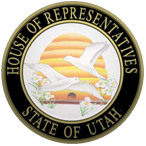By Susan Pulsipher, Utah House of Representatives, District 50
I became aware of the many reports and action plans that are required by the state while serving on the Jordan Board of Education. It was clear to me that these reports often used time and resources that would be better spent on students in classrooms. When the Education Interim Committee reviewed A Performance Audit of Public Education Reporting Requirements last year, I realized that this was an opportunity to address this problem. The audit found that although there is not a comprehensive list of all reports LEAs are required to complete, but if such a list existed it would include well over 300 reports. Reports are needed to provide transparency and accountability, but were these reports effective in getting the right information to the right people and did they effectively provide accountability and transparency in the least burdensome way?
Reports are needed to provide transparency and accountability, but were these reports effective in getting the right information to the right people? Did they effectively provide accountability and transparency in the least burdensome way?
The audit pointed out that the same information is sometimes collected in multiple reports and often reports grow in length and scope over time. Consolidating and simplifying reports and action plans would not only reduce the overlap among the multiple action plan requirements but would also help LEAs and schools focus on priorities to improve student outcomes. The audit recommends that reporting requirements be regularly reviewed to ensure they are necessary and appropriate to maintain accountability and transparency in the least burdensome way.
This fall a stakeholder group met virtually multiple times to review the problem and suggest procedures to ensure that legislation and State Board rules create report requirements that provide needed accountability and transparency in the least burdensome way. These educators represented large urban districts, small rural districts and charter schools from across the state. The group included Legislators, State Board members, a State Charter Board member, Superintendents, Business Administrators, Executive Directors, Directors, and other Administrators. The group came up with three bills, HB 42, HB 134, and HB 300 to address this problem.
There are two parts to HB 42, “Education Agency Report Process Amendments.” The first part focuses on the creation of reports by the Utah State Board. It requires the State Board of Education to establish a policy or procedures to evaluate the impact a report might have on the reporting requirements for a LEA. The second part modifies or eliminates 7 existing reports. These reports were modified or eliminated because either the reports gathered information that is collected in other ways or because the program associated with the report was eliminated.
HB 134, “Notice of Public Education Reporting Requirement,” helps legislators consider the impact a report might have on LEAs when they create legislation. It provides that the bill sponsor be given information that reflects the impact the reporting requirements will have on the LEA, and if the information will be available to taxpayers, parents, or legislators. Considering these issues when a report is created will insure the reports are appropriate, and effective in maintaining accountability and transparency in the least burdensome way.
HB 300, “Reporting Requirement for Local Education Agencies,” sets a framework to review existing reports. It asks the State Board of Education to work with LEAs to develop a process to review reports required in statute and State Board rule. The following questions will be used in reviewing required reports:
a) The report’s purpose and its effectiveness in accomplishing the report’s purpose?
b) Who requires, creates and reviews the report?
c) Whether the information is included in another report?
d) Whether the report is the least burdensome way to collect the information?
e) Whether accountability or transparency could be achieved in another way?
f) How USIMS might affect
this report?
g) What is the estimated time and cost required to complete the report and how much funding is available after the cost of the report is subtracted?
Upon review of the report the State Board could leave the report intact or recommend changes be made. Any recommended changes would be made by the entity (Legislature or State Board) that mandated the report.







